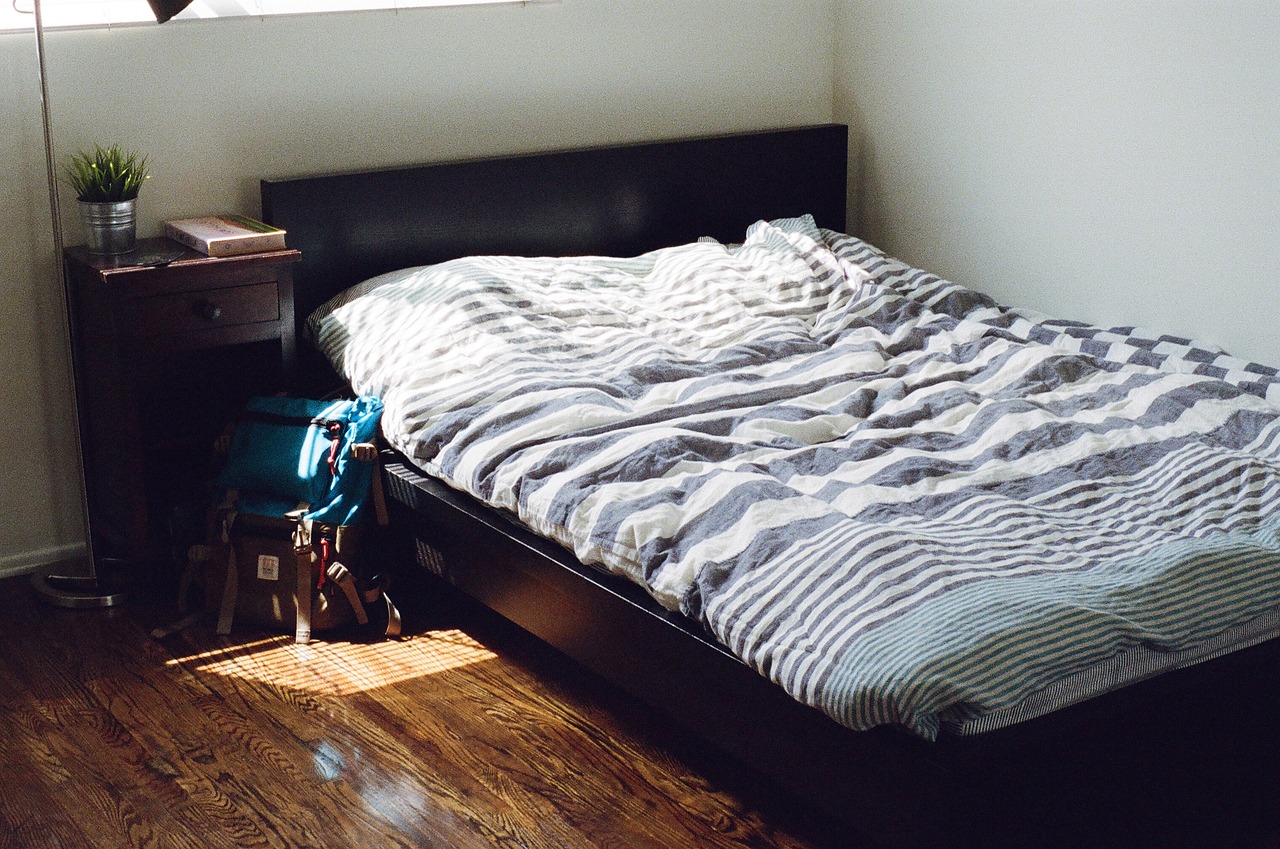Do you remember the last time you had a good night’s sleep? The kind where you wake up feeling refreshed and ready to take on the day? Now imagine that feeling being taken away from you because of tiny, blood-sucking creatures hiding in your bed.
Bed bugs have long been associated with discomfort, disgust, and social stigma. The mere mention of their name can send shivers down your spine and leave you feeling uneasy.
But have you ever stopped to think about the impact this stigma has on those who have experienced a bed bug infestation? For many, the stigma surrounding bed bugs can be just as damaging as the bugs themselves.
It can lead to feelings of shame, embarrassment, and isolation. People may avoid visiting friends or family members who have had an infestation, or even refuse to go to work or school out of fear of being judged.
This stigma can also have a significant impact on mental health and wellbeing, causing anxiety, depression, and even post-traumatic stress disorder. It’s time to take a closer look at the role bed bugs play in social stigma and how we can combat it through education and awareness.
Understanding the Social Stigma Surrounding Bed Bugs
Exploring the societal shame and discrimination surrounding the presence of bed bugs can reveal deeper insights into the psychology of cleanliness and the fear of infestation. The prevalence and perception of bed bugs as a nuisance has led to a negative community response towards those who have been affected by them.
People often associate bed bugs with uncleanliness and poor hygiene, leading to a social stigma that can be difficult for those affected to overcome. The community response to bed bugs has also led to increased intervention measures, such as inspections and treatments.
However, these interventions can also contribute to the social stigma, as those who have been inspected or treated for bed bugs may be seen as unclean or undesirable. It’s important to approach the issue of bed bugs with empathy and understanding and to recognize that anyone can be affected by these pests regardless of their level of cleanliness.
The Impact on Mental Health and Wellbeing
Dealing with these pesky critters can really take a toll on your mental health and overall wellbeing. It’s not just the physical discomfort of being bitten and having to deal with infested belongings – it’s also the psychological effects of feeling ashamed or stigmatized.
You might feel like you’re being judged by others for having bed bugs, or that people will avoid you or think less of you if they find out. This can lead to feelings of isolation, anxiety, and depression.
Fortunately, there are stigma reduction strategies that can help. One important step is to educate yourself and others about bed bugs. Many people have misconceptions about these pests, and learning the facts can help dispel some of the fear and stigma.
It can also be helpful to seek support from others who have dealt with bed bugs, whether that’s through online forums or support groups. Remember that you’re not alone in this experience, and that it’s important to prioritize your mental health and wellbeing as you navigate this challenging situation.

Blaming the Victim: Addressing Misconceptions about Bed Bugs
Don’t let false beliefs and finger-pointing add insult to injury when it comes to the pesky pests that invade our homes.
It’s common for people to place blame on the victim of a bed bug infestation, assuming that their uncleanliness or lack of hygiene is the cause.
However, this couldn’t be further from the truth. Bed bugs can be found in any environment, regardless of how clean or dirty it is.
That’s why it’s important to address misconceptions about bed bugs and educate the public on the facts.
Providing educational resources and community outreach can help dispel false beliefs and alleviate the stigma surrounding bed bugs.
By promoting understanding and empathy, we can create a more supportive environment for those dealing with the stress and anxiety of a bed bug infestation.
Remember, it’s not the victim’s fault and we should all work together to find solutions and support those in need.
Bed Bugs in Popular Culture: Reinforcing Stigma
It’s unfortunate how popular media perpetuates false beliefs and reinforces negative attitudes towards those affected by bed bugs.
Bed bugs have been featured in literature, film, and television as the ultimate nightmare, the ultimate sign of filth and poverty. This depiction has ingrained a stigma that unfairly blames victims of bed bug infestations for their own misfortune.
In literature, bed bugs are often used as a metaphor for despair and hopelessness. They’re portrayed as a symbol of decay and degradation, representing the downfall of characters who have hit rock bottom.
Meanwhile, in film and television, bed bugs are often depicted as a source of disgust and fear. Characters react in horror at the mere mention of their name. This portrayal reinforces the notion that bed bugs are a sign of uncleanliness, rather than the result of a complex and often unavoidable set of circumstances.
Combating Bed Bug Stigma through Education and Awareness
Educating ourselves and raising awareness about the realities of bed bug infestations can help break the cycle of misinformation and empower those affected to seek proper treatment and support.
One of the most important things we can do is to learn about prevention measures and take them seriously. This includes being cautious when traveling and inspecting secondhand furniture before bringing it into our homes. We should also be proactive in seeking professional help if we suspect an infestation, rather than trying to handle it on our own.
Community outreach can also play a big role in combating the stigma associated with bed bugs. By sharing accurate information and resources with our friends, family, and neighbors, we can help dispel myths and alleviate fears. We can also work to create a supportive network for those who are dealing with bed bug infestations, offering emotional support and practical assistance.
By coming together as a community, we can reduce the shame and isolation that often accompany these situations and work towards a more informed and compassionate approach to dealing with bed bugs.
Frequently Asked Questions
What are the physical characteristics of bed bugs that make them so difficult to eliminate?
If you’re dealing with a bed bug infestation, you’re likely well aware of the physical challenges that come with trying to eliminate these pests.
Bed bugs are notoriously difficult to get rid of due to their resistance to many common pesticides. Additionally, their small size and ability to hide in small crevices and cracks make it easy for them to avoid detection and treatment.
Understanding bed bug behavior is also crucial in effectively eliminating them, as they tend to be most active at night and are attracted to body heat and carbon dioxide.
Overall, the physical characteristics of bed bugs make them a formidable opponent in the fight against infestations.
How do bed bugs spread from one location to another, and what are some common ways people inadvertently bring them into their homes?
If you’ve ever dealt with a bed bug infestation, you know how frustrating it can be. But how do these pesky insects spread from one location to another?
Common sources of bed bug infestations include traveling, purchasing used furniture, and staying in infested hotels. Signs of an infestation may include small blood stains on sheets, itchy bites on your body, and the presence of live bugs or shed skins.
Unfortunately, many people inadvertently bring bed bugs into their homes through these common sources, making it important to always be vigilant and take precautions to prevent infestations.
Are there any effective natural remedies or DIY treatments for bed bug infestations, or is professional extermination always necessary?
You’re dealing with a bed bug infestation and wondering if there are any effective natural remedies or DIY treatments to get rid of them. While there are some home remedies that may offer temporary relief, such as using essential oils or diatomaceous earth, these methods are often not enough to completely eradicate the problem.
Professional extermination is usually the most effective solution, as trained experts have access to powerful insecticides and techniques to eliminate bed bugs at all stages of their life cycle. Trying to tackle the problem on your own may only prolong the infestation and lead to more frustration and expenses in the long run.
Don’t let the social stigma surrounding bed bugs discourage you from seeking professional help and taking the necessary steps to get rid of them for good.
How do bed bugs impact the economy, and what industries are most affected by their presence?
If you’re wondering about the economic impact of bed bugs, it’s safe to say they’re not doing anyone any favors.
These pesky insects can be found in a variety of industries, from hotels and apartments to public transportation and retail stores.
The affected industries are not only dealing with the cost of extermination but also the potential loss of business due to public perception and social stigma surrounding bed bugs.
It’s important to address the issue promptly and thoroughly to minimize the impact on the economy and public health.
What steps can individuals and communities take to prevent the spread of bed bugs and reduce the social stigma associated with infestations?
If you want to prevent the spread of bed bugs and reduce the social stigma associated with infestations, community education is key.
Start by educating yourself and your neighbors about the signs of infestations, how to properly identify and dispose of infested items, and how to prevent bed bugs from entering your home.
Encourage your community to take action, such as regularly inspecting and cleaning second-hand furniture, and seeking professional help if an infestation is suspected.
By working together and reducing the stigma surrounding bed bugs, we can create a safer and more comfortable living environment for everyone.
Conclusion
Congratulations! You’ve reached the end of this article on the role of bed bugs in social stigma. Hopefully, you now have a better understanding of the negative impact that bed bugs can have on people’s mental health and wellbeing.
It’s important to remember that anyone can get bed bugs, and it’s not a reflection of their cleanliness or worth as a person. However, the social stigma surrounding bed bugs can often lead to victim-blaming and misconceptions about how bed bugs are spread.
It’s time to break down these barriers and combat the stigma through education and awareness. As the saying goes, “knowledge is power,” and by educating ourselves and others about the facts surrounding bed bugs, we can reduce the negative impact of this social stigma.
So let’s work together to change the narrative surrounding bed bugs. Let’s educate ourselves and others, and let’s support those who are dealing with the physical and emotional toll of a bed bug infestation. Together, we can break down the walls of stigma and create a more understanding and compassionate society.










